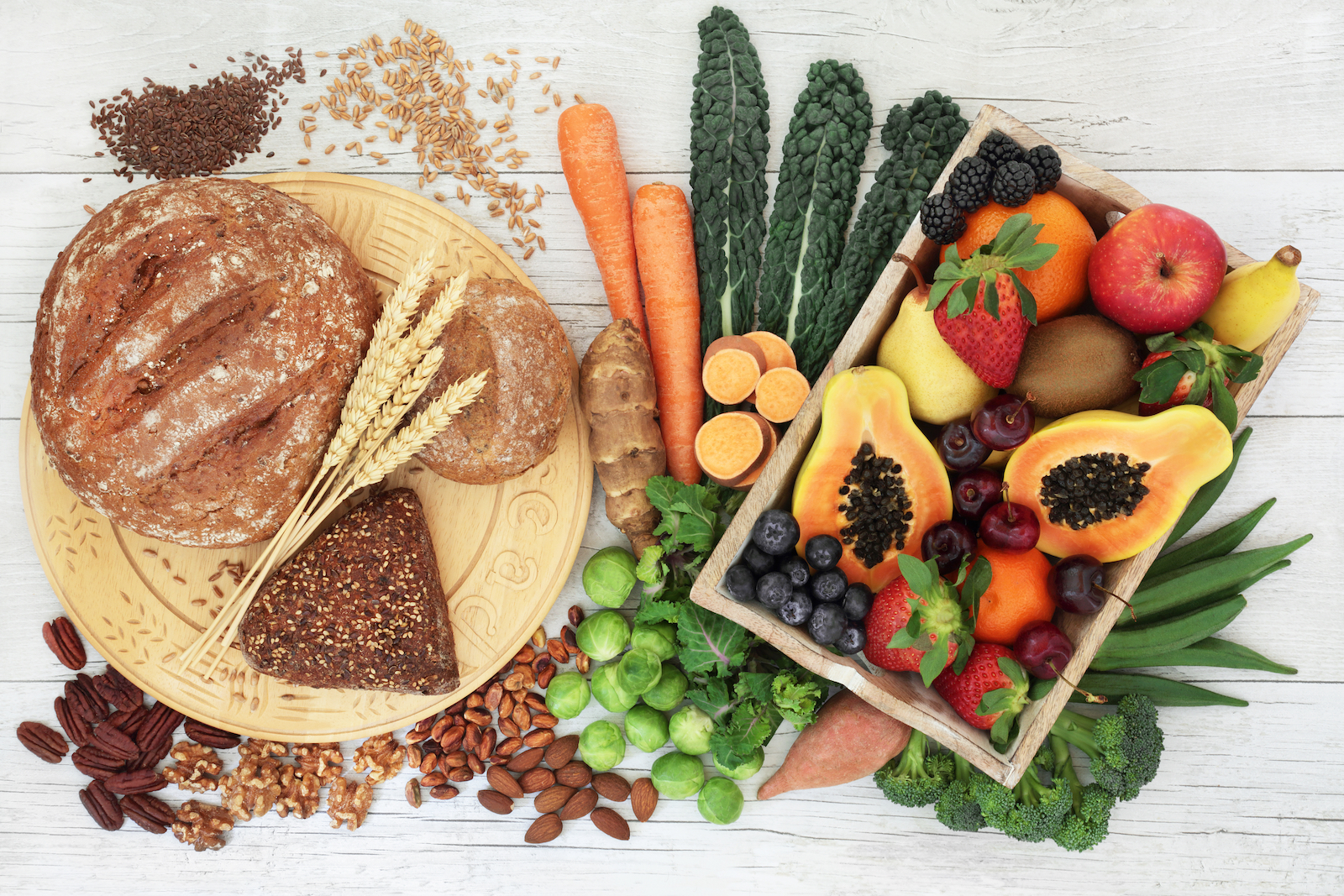Grains contain a variety of soluble and insoluble fiber along with plenty of phytochemicals. Those that can eat gluten grains can use barley, whole-grain wheat and bran, and rye as excellent fiber sources, with a good nutrient profile, but if we are following a GF diet, we need to find the fiber content and nutrients elsewhere.
Soluble fiber help to improve digestion and stool formation. It has been shown to help to reduce blood cholesterol and aid blood glucose control, – this is an important factor when considering blood sugar balance for sustainable energy provision, and managing the risk of diabetes.
Insoluble fiber helps the stool to contain more water, softening the stool and making it easier to pass through. This helps to promote regular bowel movement and support the health of the bowel along with a good intake of soluble fiber.
A high fiber diet can be achieved by including the following foods into your diet:
- Oats (GF) are a good source of soluble fiber as an addition to your breakfast
- Beans, peas, and lentils provide an excellent source of both types of fiber
- Apples, citrus food, carrots, and psyllium provide soluble fiber
- Vegetables such as cauliflower, carrots, and potatoes
- Fresh fruit, raw vegetables and popcorn, and a handful of nuts add to fiber intake
If you are not used to eating a high fiber diet it is important to increase fiber intake gradually over a few weeks. A high fiber diet can initially cause gas, bloating, and cramps. Gradually improving the fiber intake allows your gut bacterial balance to improve gradually and adjust it to deal with the increased fiber content.
Fiber is not digested by your body as such, it travels nearly intact through your body. It includes the part of plant foods your body can’t digest or absorb, and provides the bulk to form stool and a method for toxins to exit your body. Soluble fiber dissolves in water, while insoluble fiber does not dissolve. The rest of the plant-based food components provide plenty of quality phytonutrients for absorption.
Note that it is always best to choose whole foods, including skins of apples and such. Canned and processed foods have less fiber than fresh whole foods. Also, while there are a variety of fiber supplements in the market, it is always best to get fiber from natural whole food sources. If you need additional help to maintain a regular bowel function, you can sprinkle some Psyllium flakes on your breakfasts, or we can discuss additional options. Make sure you always drink plenty of water to stay hydrated and to help stool formation and motility. Fiber works the best when it absorbs water, making your stool soft with healthy bulkiness to exit regularly.
Health benefits of fiber
A combination of the two types of dietary fiber helps your body to excrete toxins from your body through regular stool formation and excretion. Fibre also contributes to many other health outcomes, including healthy body weight, control of high blood pressure, lower the risk of colon cancer helping to maintain a healthy gut microbial environment, lower the risk of diabetes. Fiber is also known to balance cholesterol levels and help the body’s satiation signals which help you to know when you are full, – this requires more chewing to allow your body to catch up with relevant signaling. Ideally, you will chew each mouthful 30+ times, this helps your digestion and absorption, saliva being the first stage of the digestive process.
TIP: slow down your eating by putting your utensils down between the mouthfuls.





0 Comments